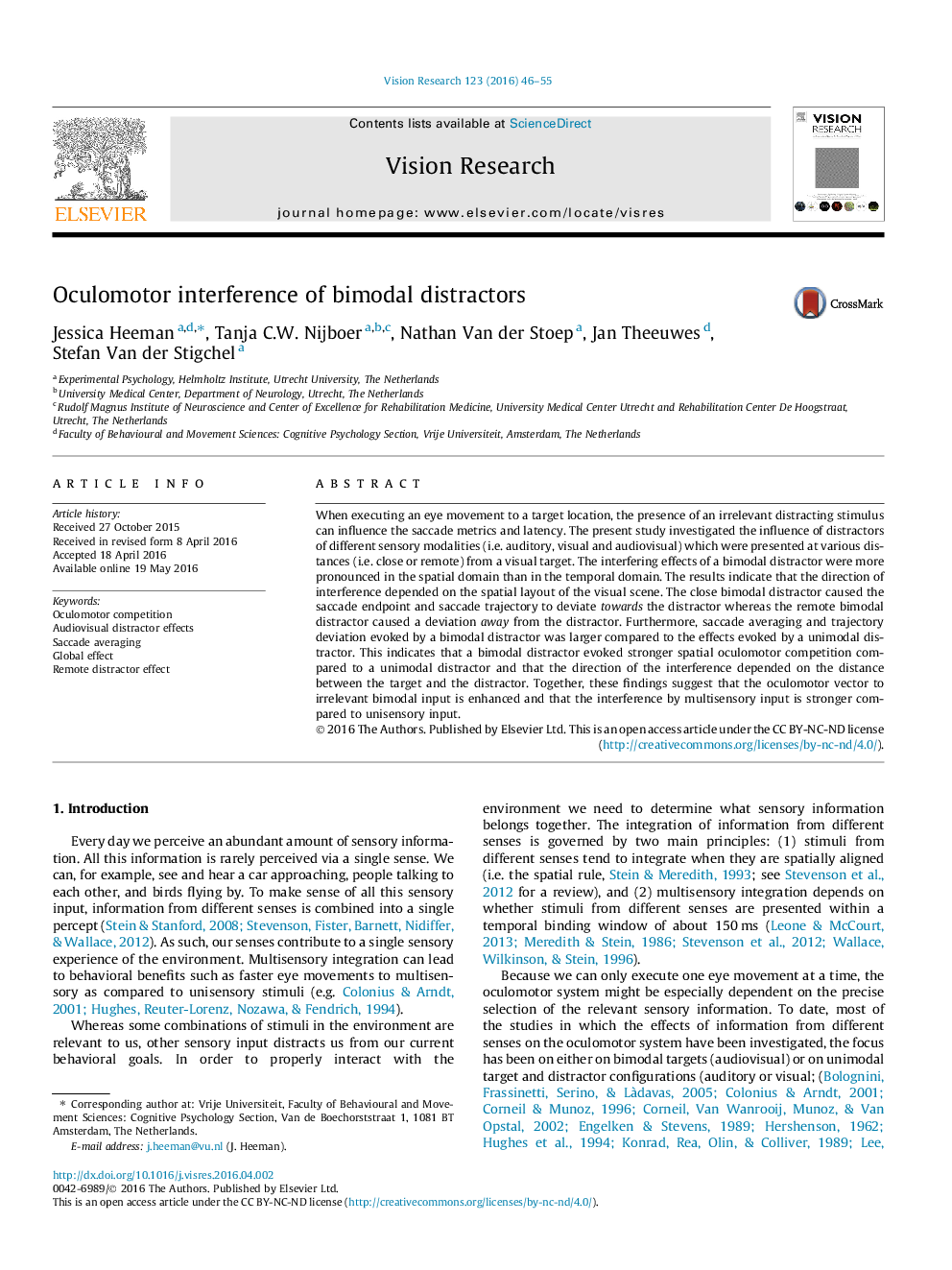| کد مقاله | کد نشریه | سال انتشار | مقاله انگلیسی | نسخه تمام متن |
|---|---|---|---|---|
| 6203018 | 1603176 | 2016 | 10 صفحه PDF | دانلود رایگان |

- Bimodal distractors evoked more oculomotor competition than unimodal distractors.
- The direction of interference was dependent on the spatial layout of the scene.
- Close distractors cause deviation towards, remote distractors cause deviation away.
- Saccade averaging and trajectory deviation were similarly affected by distractors.
- Interfering effects were most pronounced in the spatial domain.
When executing an eye movement to a target location, the presence of an irrelevant distracting stimulus can influence the saccade metrics and latency. The present study investigated the influence of distractors of different sensory modalities (i.e. auditory, visual and audiovisual) which were presented at various distances (i.e. close or remote) from a visual target. The interfering effects of a bimodal distractor were more pronounced in the spatial domain than in the temporal domain. The results indicate that the direction of interference depended on the spatial layout of the visual scene. The close bimodal distractor caused the saccade endpoint and saccade trajectory to deviate towards the distractor whereas the remote bimodal distractor caused a deviation away from the distractor. Furthermore, saccade averaging and trajectory deviation evoked by a bimodal distractor was larger compared to the effects evoked by a unimodal distractor. This indicates that a bimodal distractor evoked stronger spatial oculomotor competition compared to a unimodal distractor and that the direction of the interference depended on the distance between the target and the distractor. Together, these findings suggest that the oculomotor vector to irrelevant bimodal input is enhanced and that the interference by multisensory input is stronger compared to unisensory input.
Journal: Vision Research - Volume 123, June 2016, Pages 46-55